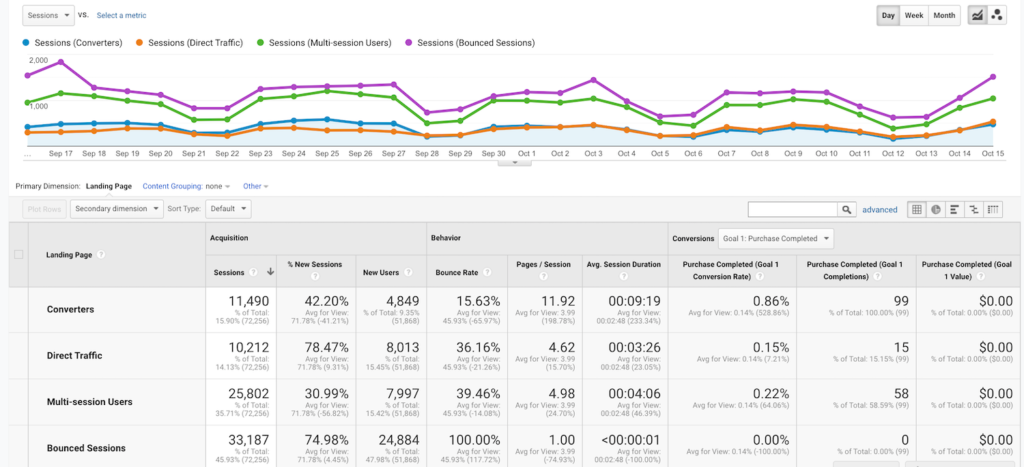Unveiling the Blind Spots: Comprehending What Google Analytics Goals Can not Gauge
In the realm of digital analytics, Google Analytics stands as a powerful tool for tracking and assessing on-line customer communications. Comprehending what Google Analytics goals can not gauge is critical for obtaining a thorough sight of customer actions and interaction.
Customer Actions on External Operatings Systems
Understanding exactly how customers communicate on exterior platforms is crucial for maximizing on the internet techniques. Exterior platforms, such as social media networks, reference websites, and on-line discussion forums, play a significant duty in driving web traffic to a business's internet site. By examining user habits on these systems, organizations can get important insights into the performance of their advertising initiatives and the choices of their target market.
One secret aspect of individual habits on external systems is the reference source. By tracking where the customers are coming from, organizations can identify which systems are driving one of the most traffic to their website. This information can aid firms allocate their sources extra successfully, concentrating on the platforms that produce the finest outcomes.

Offline Interactions and conversions
Examining user behavior on external systems provides useful insights right into on-line approaches; however, considering offline conversions and interactions is equally critical for an extensive understanding of a company's total performance. Offline conversions, such as in-store acquisitions or phone queries, play a substantial function in lots of companies' success.

Attribution Beyond Last Click
When delving into the world of electronic advertising and marketing analytics, it ends up being necessary to look past the solitary touchpoint of the last click for an extra detailed understanding of acknowledgment. While Google Analytics offers important insights into customer actions, counting only on last-click acknowledgment can be restricting - what data is google analytics goals unable to track. Acknowledgment designs that surpass the last click supply a much more nuanced view of the client journey, taking into consideration all the touchpoints that cause a conversion
Attribution past the last click enables marketing experts to appoint credit rating click this to various interactions along the conversion path, offering a more clear photo of the effectiveness of various marketing channels. By exploring multi-touch attribution models such as linear, time decay, or position-based acknowledgment, organizations can much better designate their marketing budgets and optimize their techniques for maximum effect.
Comprehending the influence of each touchpoint in the conversion process is important for making informed choices and taking full advantage of ROI. By welcoming acknowledgment past the last click, organizations can get much deeper understandings right into customer behavior and tailor their advertising initiatives better.
Cross-Device and Cross-Browser Tracking

Likewise, cross-browser tracking enhances cross-device tracking by catching user behavior as they change between different web browsers. Understanding just how individuals engage with internet sites on different browsers can aid marketing experts maximize their on-line experiences to make certain uniformity and performance across different platforms.
Qualitative Information and User Intent
Recognizing user intent through qualitative data evaluation is critical for creating targeted digital marketing methods that reverberate with the needs and preferences of the target market. Qualitative information offers understandings into the 'why' behind customer activities, clarifying inspirations, emotions, and preferences that measurable information alone can not catch. By analyzing individual responses, comments, and communications, marketing experts can uncover important info regarding user intent, allowing them to tailor their messaging, content, and offerings to better line up with what their audience is looking for.
Qualitative information likewise aids in understanding the context in which individuals involve with a web site or application. This contextual understanding allows online marketers to develop more pertinent and individualized experiences, ultimately driving greater engagement and conversion rates. By delving into customer intent through qualitative information analysis, companies can acquire a deeper understanding of their target market, leading to more reliable marketing approaches that meet customers' expectations and demands.
Verdict
To conclude, Google Analytics objectives have restrictions in gauging customer behavior on external platforms, offline conversions, attribution beyond last click, cross-browser and cross-device monitoring, and qualitative information connected to customer intent. what data is google analytics goals unable to track. It is essential for services to be conscious of these unseen areas in order to supplement their data evaluation with various other devices and approaches to get an extra comprehensive understanding of their audience and Visit This Link improve their overall digital advertising and marketing approaches
By analyzing individual behavior on these platforms, businesses can acquire useful understandings into the effectiveness of their advertising and marketing initiatives and the choices of their target audience.
Analyzing individual behavior on exterior platforms gives useful insights right into on-line strategies; nonetheless, taking into consideration offline conversions and communications is just as essential for an extensive understanding of a business's overall performance.In digital advertising analytics, moving beyond last-click acknowledgment to check out cross-device and cross-browser monitoring is essential for gaining an all natural understanding of customer interactions across various platforms and gadgets. By analyzing customer feedback, comments, and communications, marketing professionals can reveal useful information regarding customer intent, permitting them to tailor their messaging, content, and offerings to much better align with what their audience is seeking.
By delving right into customer intent via qualitative data analysis, businesses can acquire a much deeper understanding of their target audience, leading to more effective marketing approaches that meet individuals' needs and expectations.